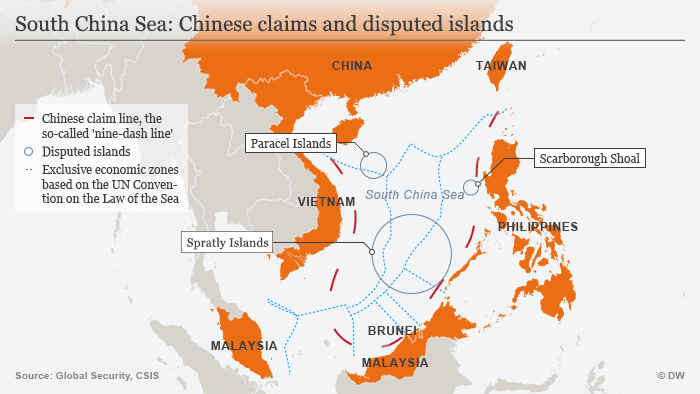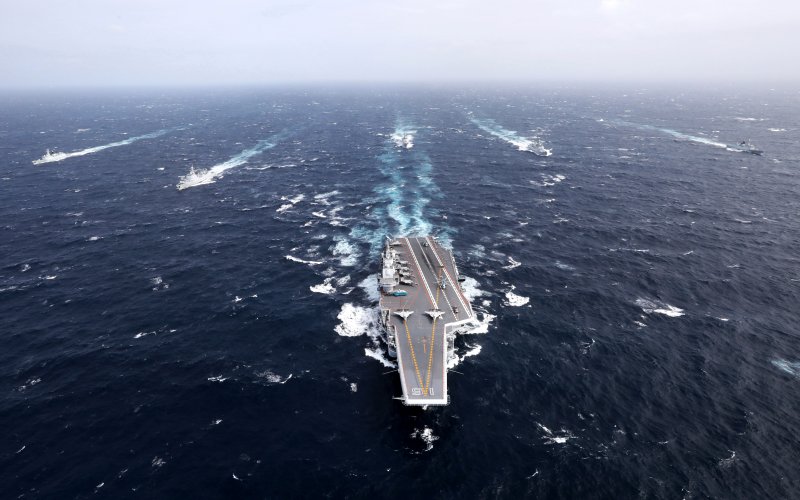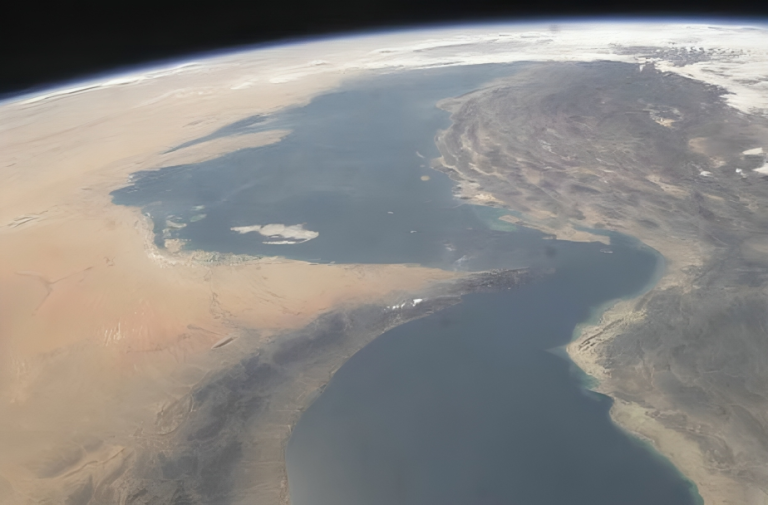
Like the name suggests South China Sea Dispute, it is an ongoing dispute between several sovereign states within the region, namely Brunei, China, Taiwan, Indonesia, Malaysia, Phillippines, and Vietnam, over the claiming of various Islands and Marine Areas within the region. The disputes initially came into existence when in the early 1950s, China claimed the South China sea through a nine-dash line model. The sea in recent years has become a flashpoint for tensions between China and various ASEAN countries. It is also a critical discussion topic concerning India, as we have strategic interests there. So, we have to discuss so many things, and for that, we have provided below some key points to make it easy.
1. The South China Sea is a part of the vast pacific ocean in Southeast Asia. It is located in the south of China, east and south of Vietnam, west of the Philippines, and north of Borneo’s islands. Moreover, being surrounded by Brunei, China, Taiwan, Indonesia, Malaysia, Philippines, and Vietnam, it always remained a major international shipping lane in the world. There are number of coral reefs, atolls, and small islands in the sea. Among All The Paracel Islands, the Spratly Islands and the Scarborough Shoal are the most important.
2. The sea is considered to be of great importance both geographically and in resourcefully. Its strategic importance can be seen through its location as it is the connecting link between the Indian Ocean and the Pacific Ocean (Strait of Malacca). The United Nations Conference on Trade And Development (UNCTAD) also claims that one-third of the global shipping passes through it, carrying trillions of trade. If we want to talk about the resources, then many sources have claimed that this sea has one-third of the world’s marine biodiversity, huge oil and gas reserves.
3. Talking about history during the second world war, the Empire of Japan used the islands in the South China Sea region for various military purposes. It asserted that nobody was there at that time, claiming it. But after the Treaty Of San Francisco was signed, Japan had to move back from the position. Then the role of China started with various claims to the islands during the 1951 treaty negotiations. China made claims in the sea with the help of a nine-dash line theory.

4. The nine-dash line, which was also known as the eleven-dash line previously, refers to an imaginary, undefined line marked in the South China Sea region, which means that the part coming under it solely refers to the Republic of China. The area under the nine-dash line includes some of the major islands like the Parcel and the Spratly. China claims it by citing 2,000 years of history when the two island chains were regarded as integral parts.
5. With China’s initial claims regarding the islands, other states surrounding it have also claimed it various times. Starting with Vietnam, it hotly disputes China’s claims, saying that it has actively ruled over both the Paracels and the Spratlys since the 17th Century and has the documents to prove it. Being the third major claimant due to its geographical closeness to the Spratly Islands, the Philippines is also in the race. Malaysia and Brunei also claim their territory in the South China Sea that they say falls within their economic exclusion zones. Where Brunei does not claim much of the disputed islands, Malaysia claims some islands in the Spratlys.
ALSO READ: 10 Key Points On CPEC
6. With this everlasting claiming of the region, relations between countries in the region have worsened, resulting in stand-offs many times. Like with the example, In 1974 and 1988, the Chinese came face to face with Vietnam, on issues of Parcel and Spratly. In the face-off, Vietnamese got a significant fall back with losing its 70 and 60 soldiers in both the times.
In early 2012 China engaged with the Philippines in a maritime stand-off for the reason of acquisition of Scarborough Shoal from both sides. In May 2014, the Vietnamese and Chinese troops got multiple collisions after China deployed a drilling rig into waters near the Paracel Islands.
7. In recent years the United States, not even being close to the dispute, has shown much interest in it. The U.S has come forward and said that Beijing’s claims to offshore resources across most of the South China Sea are entirely unlawful, as is its campaign of bullying to control them. On the other hand, America stands with other South Asian states in protecting their sovereign rights to offshore resources. Although the U.S is working for ASEAN countries, it is believed that the reason behind this is to stop China from increasing its resources and power.
8. Taking India in this account, Indian has always supported ensuring freedom of navigation and resolving disputes according to UNCLOS referring to the South China Sea, but after the Philippines won the arbitration award in its favor in 2016, India has separated itself from the dispute. The other reasons for the India withdrawal from the issue were India not being a party to the maritime territorial disputes in the region, and India wants to preserve its “Wuhan Consensus” with China.
9. For India, the South China Sea is of great strategic importance. The main one being that if China gets the whole control over the sea, he can increase its naval warships and deploy its military in the Asia-pacific and the Indian Ocean region. Not only this, but India has also organized its military exercises with Vietnam in the region. Indian is also planning to establish its project in the region with the help of Vietnam.
10.Though there are way more challenges to the solution of the South China Sea Dispute. However, Organisations like NATO, EU, UN ASEAN can play a significant role in resolving this issue by bilateral negotiations between the countries. Peaceful bilateral or multilateral talks and negotiations can be used because aggression or war is not a solution to this or any problem at all.
In 2013, the Philippines announced that it would take China to an arbitration tribunal under the violation of UN Convention on the Laws of the Sea. In July 2016, the UN tribunal backed the case, saying that China had violated the Philippines’ sovereign rights. However, China boycotted the proceedings, and called the ruling “ill-founded”. It says it will not be bound by it.
Also Read:
- Ukraine’s SBU Kills Russian Agents Behind Colonel’s Assassination
- Australia Expects Chinese Spying During Major Military Drills Amid South Pacific Tensions
- Indian Army’s Drone Strikes Target Separatist Camps in Myanmar, Killing Three Leaders
- Mystery Deepens in Disappearance of Indian Army Officer from Kerala
- Indian Army Rescues Critically Endangered Pangolin Along Indo-Pak Border





















1 thought on “10 Key Points On South China Sea Dispute”
Good reference